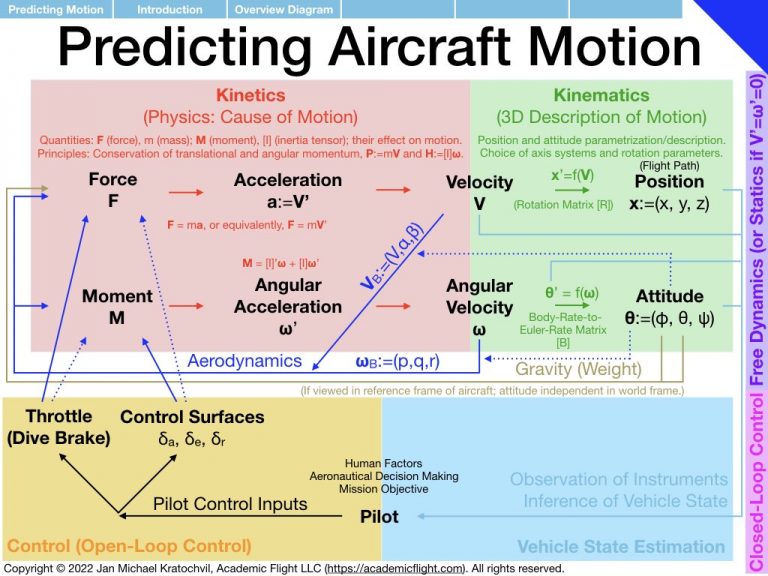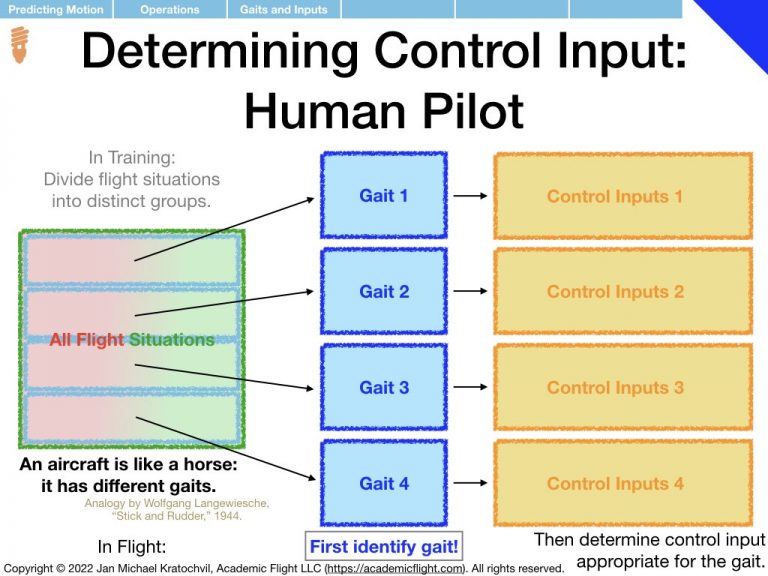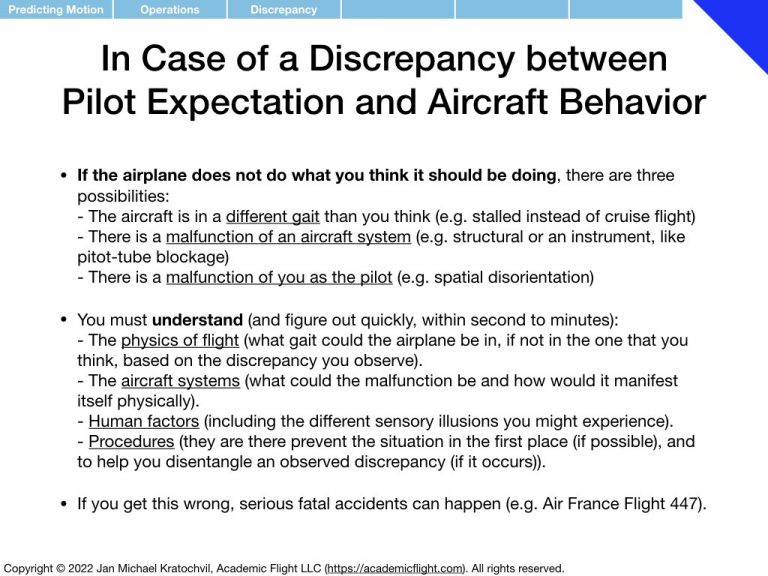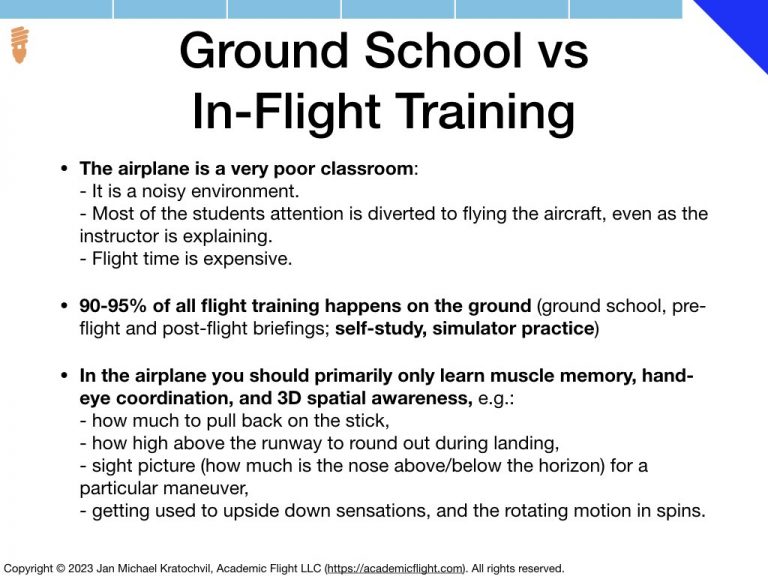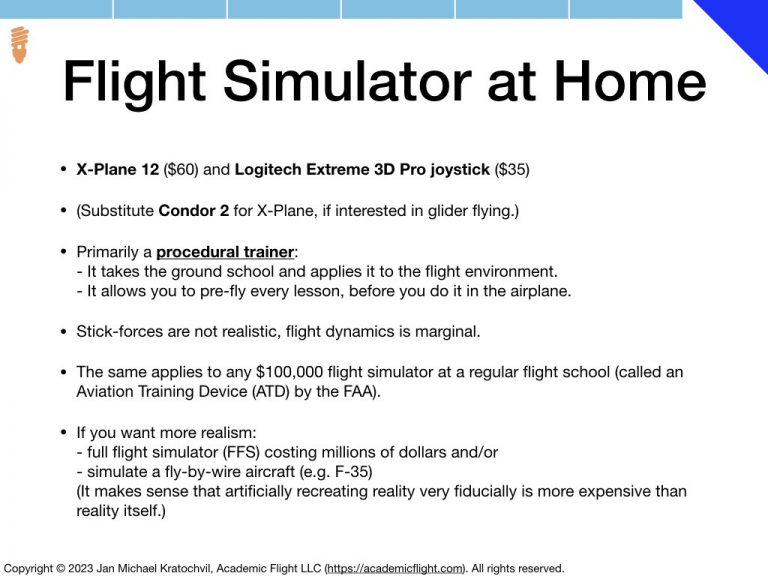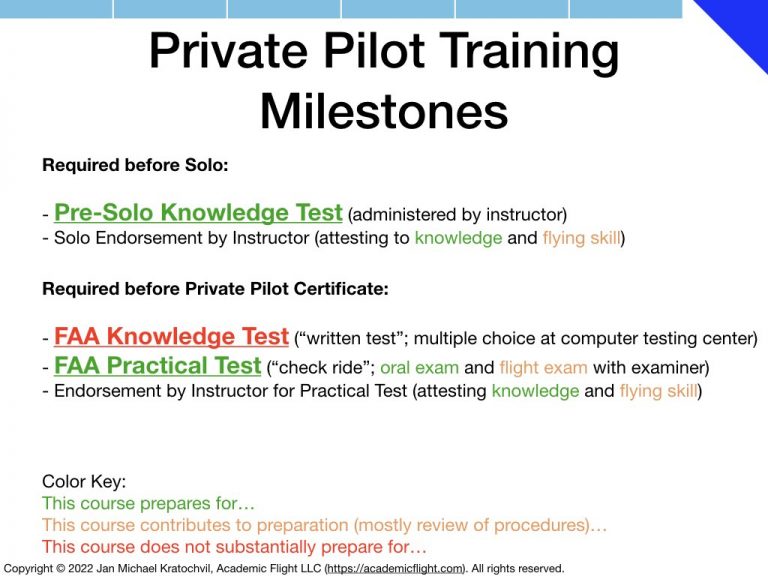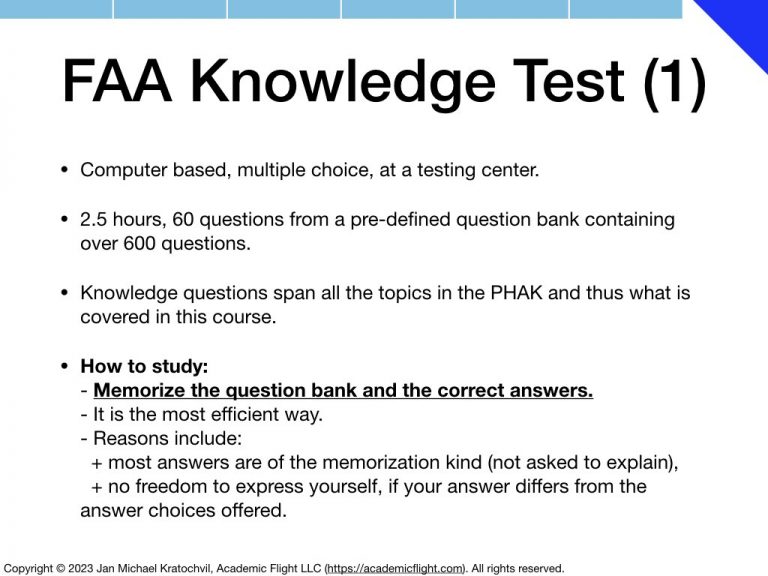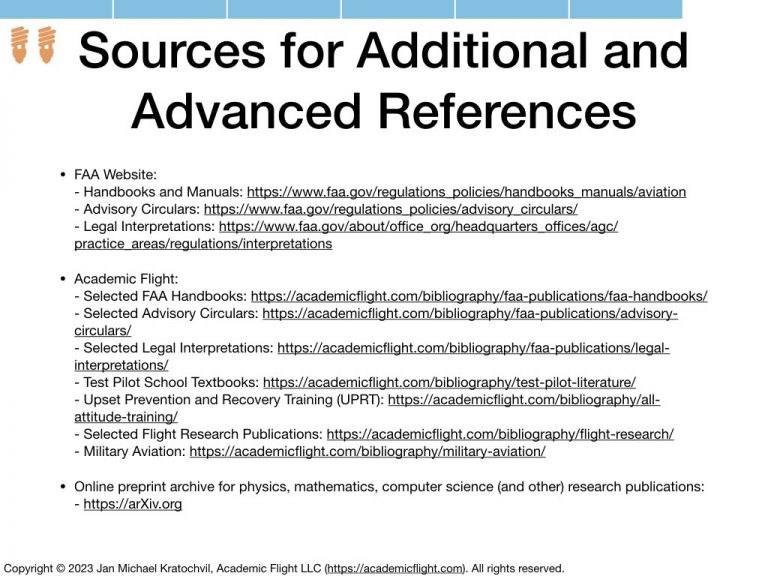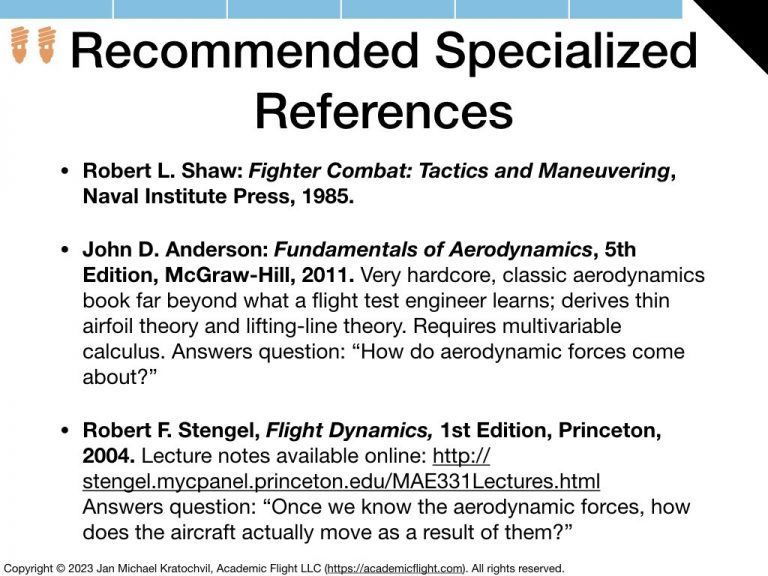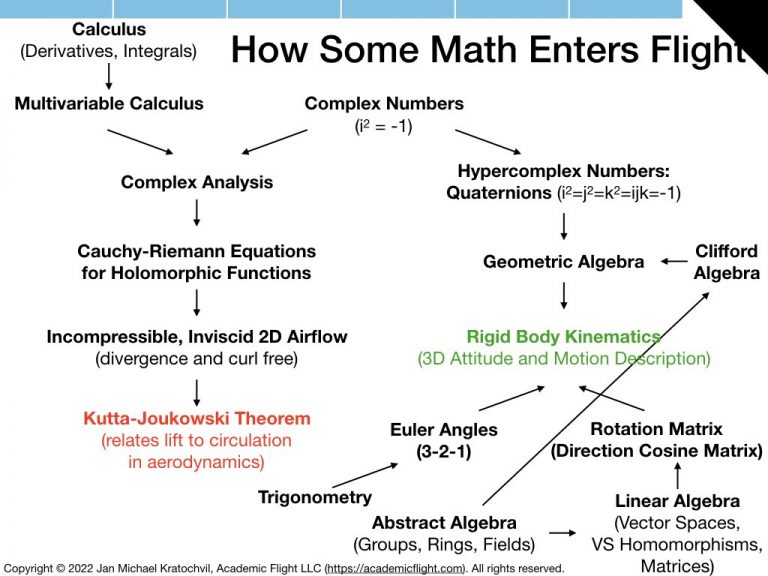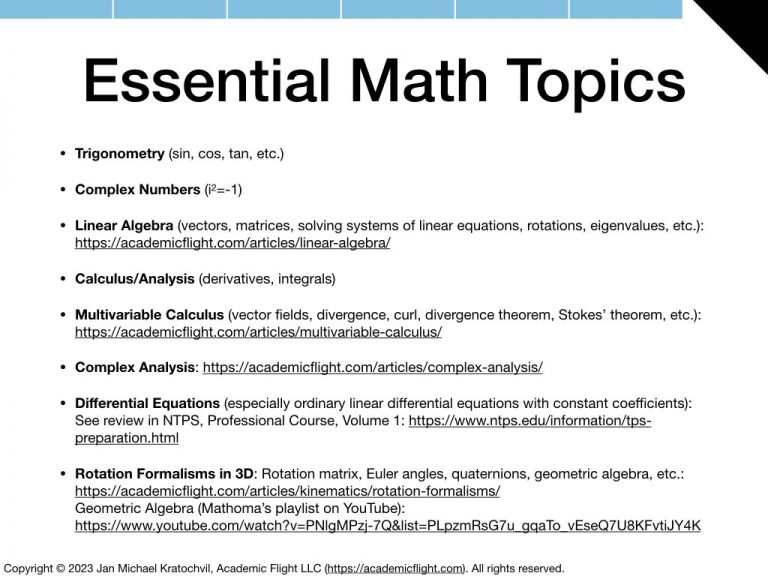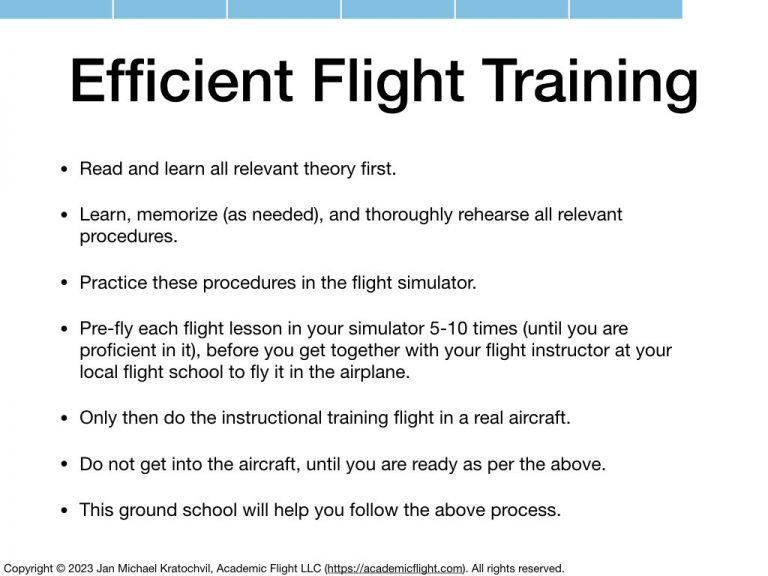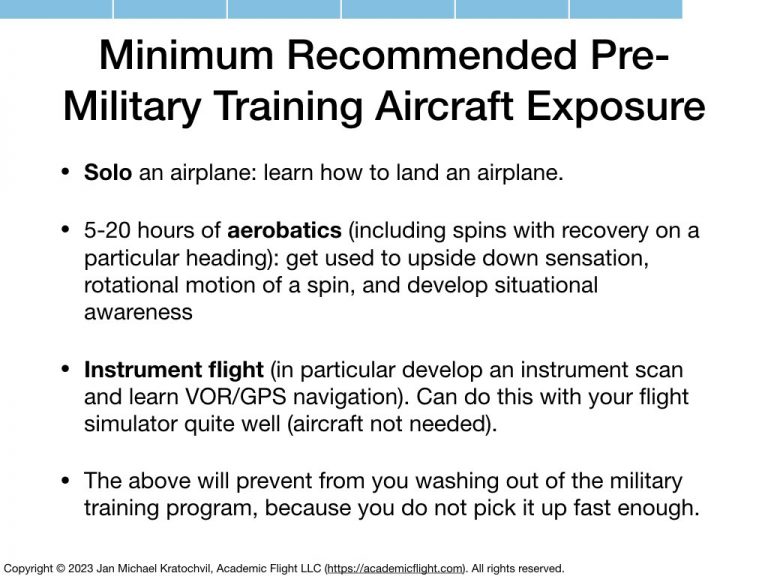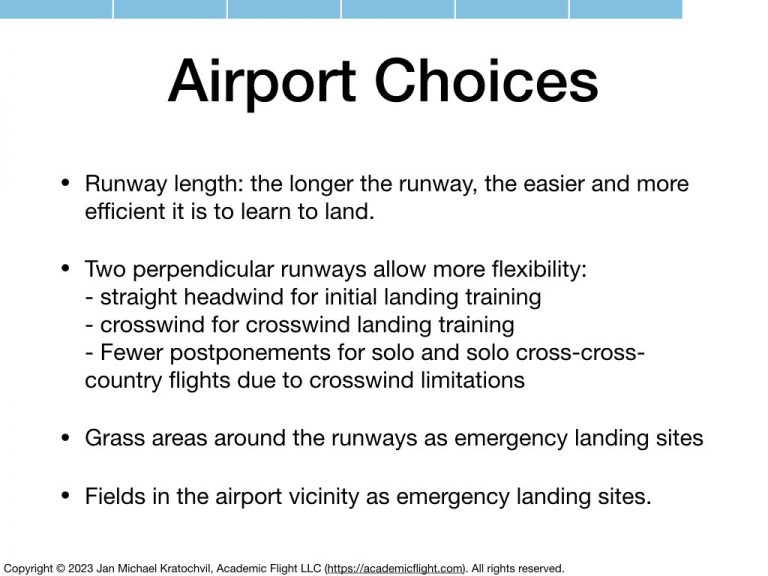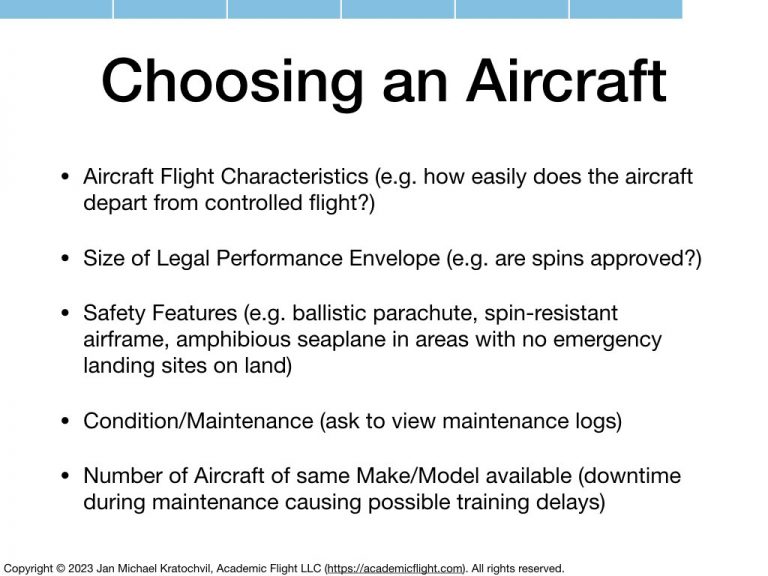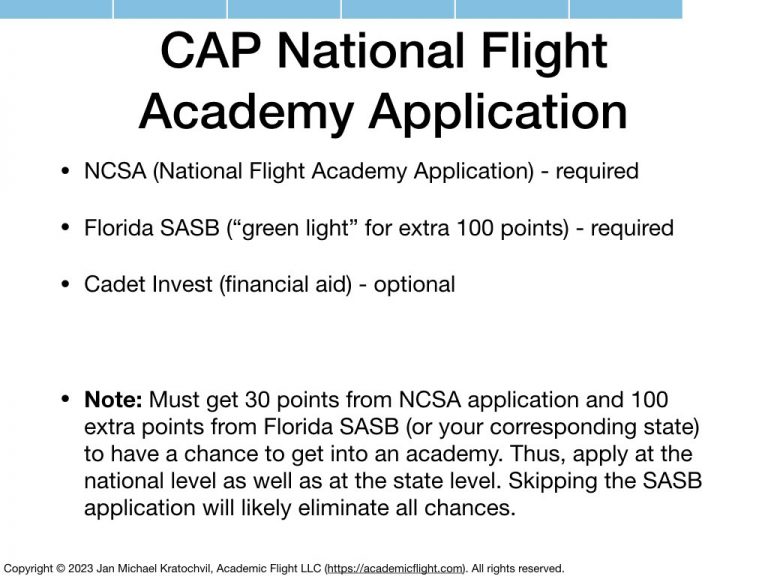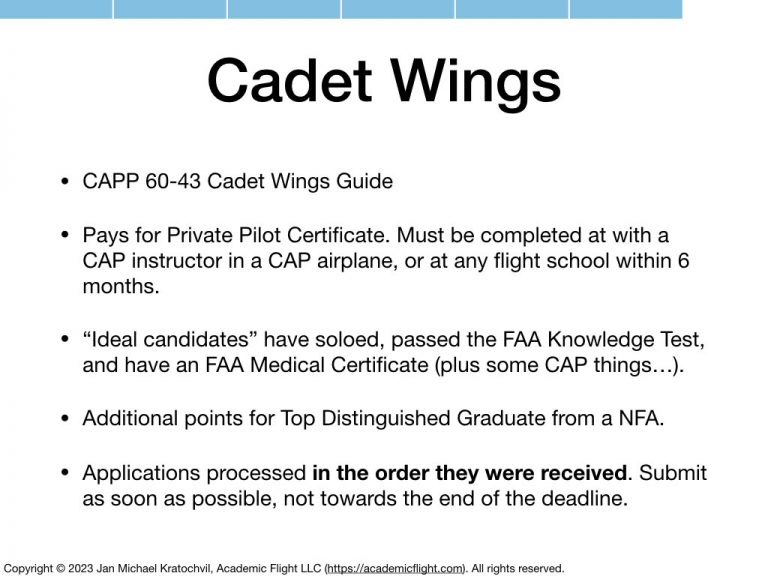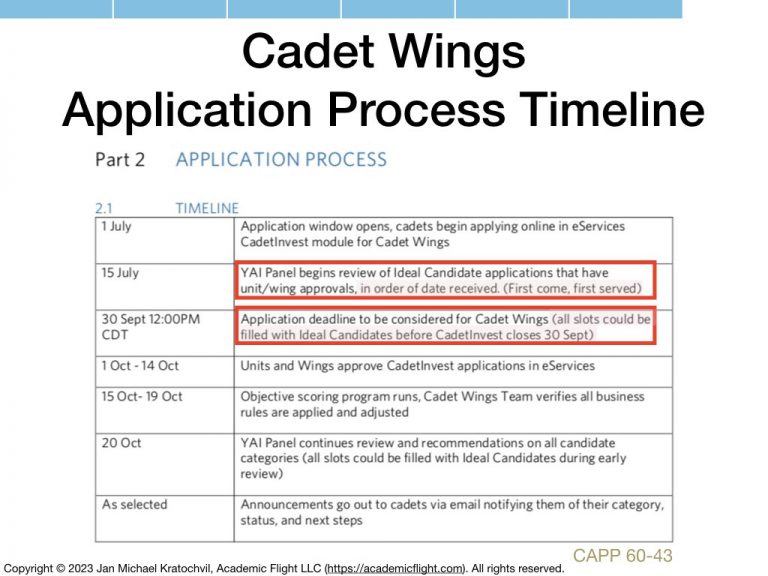PPGS 2023-2024, Lecture 1: Introduction – Selected Presentation Slides
Preamble
The lecture slides in this course cover a broad range of difficulty levels, from basic private pilot knowledge, which even a student pilot needs to know, to hardcore flight test and aerospace engineering concepts. To make this broad range more palatable and guide the participants of this ground school, which pieces of information are more basic and fundamental than others, and which parts they really absolutely must know as private pilots, and which parts are more advanced for the benefit of pilots with serious future performance oriented ambitions (military pilots, test pilots), the lecture slides are marked with a color code in their upper right corners. The meaning of the colors is defined in the slide below.

Conceptual Overview of Piloting a Vehicle
The Gaits of an Aircraft – How to Think About Flight Dynamics in Real Time
What does it really mean to drive a car or fly an aircraft? And why do we need so much ground school and physics knowledge as a pilot, whereas driving a car can be learned mostly by just doing? The slides explore, why for the most part one does not learn to fly an airplane by flying an airplane: one learns to fly an airplane mostly in ground school. We also show what happens, when things go wrong in a pilot’s understanding of the situation, and why loss of control by the pilot is one of the main causes of general aviation accidents (airliners are not immune to this problem either).
Flight Characteristics and Loss of Control
Loss of control by the pilot is the leading cause of fatal accidents in general aviation in the U.S. and in commercial aviation worldwide (see FAA Airplane Flying Handbook, Chapter 5, 2021). Loss of control occurs, when an aircraft does not respond – or responds differently – to a pilot’s control inputs, in a way that the pilot does not expect or that is contrary to standard control responses
In the video below, the different stall characteristics of two aircraft are showcased and compared. Towards the end of the video, the concept of loss of control in flight (LOC-I) is demonstrated by means of a cross-controlled stall, where a gradual pull on the stick causes a sudden, uncommanded roll, resulting in a nose-down attitude with a precarious bank angle and corresponding altitude loss. If this happened during a turn to final approach near the ground, recovery from the resulting upset may prove impossible. Furthermore, any hesitation by the pilot due to a startling effect as a result of the upset may delay the recovery beyond what is shown in the video, or even make recovery impossible even at high altitude.
This is why not only recovering from upsets should be a part of pilot training, but awareness of such situations in the first place, including theoretical knowledge and an intimate familiarity with the specific flight characteristics of the aircraft make and model, which the pilot is flying.
Tests Required for FAA Private Pilot Certificate
Study Materials and References (including References for Aerospace Engineers)
Only the first slide is relevant for the private pilot certificate. The additional slides are for people interested in going much deeper into some topics, and for students who would like to study flight test engineering, aerospace engineering, and mathematics.
Flight Training in an Aircraft
A few notes on flight training in an actual aircraft, beyond the academics of this ground school. While actual in-flight training comprises only ca. 10% of flight training (90% is ground school, self-study, procedure rehearsal, simulator practice, etc.), flight training is an important part of pilot training. Knowing how to go about it is key for efficiency and a good learning outcome. The slides below offer a few thoughts, but much more needs to be said than is covered here.
The slides also touch upon some Civil Air Patrol (CAP) flight training programs for CAP cadets – National Flight Academies (NFA) (training for solo) and the Cadet Wings Program (training from solo to private pilot) – and offer suggestions how to apply for them.


